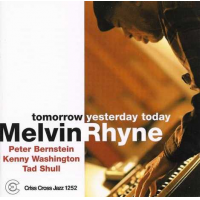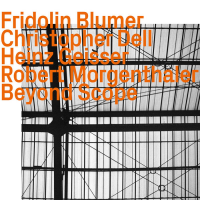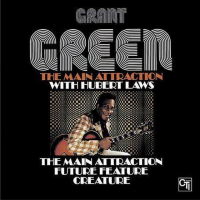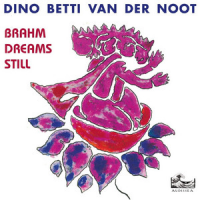Home » Jazz Articles » Liner Notes » Jimmy Greene: Gifts and Givers
Jimmy Greene: Gifts and Givers
However, what we have here is not so much a competition, but a complimentary pairing that makes the most of the individualistic styles of Jimmy Greene and Marcus Strickland, the genesis of which actually came when producer Gerry Teekens approached Greene a few years ago about doing a project with Eric Alexander. While that union never materialized, Greene jumped at the chance to work with Strickland when the opportunity came, but was determined to strike a different approach to this two horn line-up.
"With any two tenor or two trumpet or trombone record the first thing that comes to mind are those classic battle type records, and in their own respect those are tremendous," Greene explains. "But over the years, playing with a lot of different people and in different situations you end up doing that kind of thing and it becomes attack mode, which gets away from what I really hold important as an artist. It gets into more of a competitive type of deal and I really don't approach music that way."
Jimmy's challenge became how to work within the tradition, but go beyond that in a way that puts the music at the forefront. As Greene tells it, "I thought to myself, 'I really respect Marcus and think he's a great voice on tenor, so how can we make music for two of us that says something and really showcases each of us, while making a musical statement as well?'" The answer involved achieving some common ground and a fresh approach to the material in general. "We played more standards on this record than I've probably ever played on a record," says Greene. "But there are reharmonizations and reinvestigations of these standards. I wanted to get something that featured the sound of two tenors and have the same kind of feeling of a tenor battle record, but also be different."
Helping Greene realize the total effect of his muse as heard on Gifts and Givers, Greene assembled a cast of associates that includes some old buddies as well as some new friends. A newcomer to the Criss Cross fold, Marcus Strickland has been on the fast track since hitting the New York jazz scene just a few shorts years ago. He's appeared on Grammy-nominated albums by Dave Douglas and Roy Haynes and has recently started his own record label. In addition, the readers of JazzTimes magazine in their 2006 poll named the saxophonist "Best New Artist." "When he was in college, he was already playing at a very high level and he actually subbed for me on gigs with Tom Harrell and the New Jazz Composers Octet," Greene says. "He has a beautiful sound and a great concept and I knew he and I would play well together."
Although Jimmy had met Texas native Mike Moreno many years ago, this project would be the first to bring the two gentlemen together. A graduate of the highly touted music program at the Houston High School for the Performing and Visual Arts, Moreno had the good fortune to be a member of an elite group of peers at the time that included such current heavy hitters as Robert Glasper, Jason Moran and Kendrick Scott. In addition to leading his own band, the guitarist has been heard with a wide variety of leaders including Eldar, Jeremy Pelt and Kenny Garrett. "I've never had a guitarist on a record or even worked with one since I've been on the scene, but there are a few arrangements on this record that were done for a student ensemble of mine that has a guitarist, so I knew I would need the guitar and thought of Mike," explains Greene. "I was blown away by how he played on the record. Everything I could have wanted he did in abundance. His sound is warm and beautiful and his lines are really inventive."
Commenting on Danny Grissett's 2006 debut as a leader, Promise (Criss 1281), this writer called the disc "one of the best maiden voyages that I have heard in years." Since his arrival in New York City just four short years ago, the pianist has kept some heady company working with Vincent Herring, Freddie Hubbard, Russell Malone, Tom Harrell, and Nicholas Payton. "Over the years, I've played with him in The New Jazz Composers Octet and the last year I played with Tom Harrell, Danny was in the band. He's a very complete pianist and I like the adventuresome harmonic approach he's developed."
Returning from their previous appearances on Jimmy's True Life Stories (Criss 1279), bassist Reuben Rogers and drummer Eric Harland are already well established on their respective instruments and need little in the way of introduction for all save the most inexperienced of jazz listeners. "Reuben is so adaptable to so many situations. He has a huge sound, an amazing sense of time and feel, and his harmonic sense is tremendous too. He and Eric fit together like hand and glove." Speaking further in regards to Harland, Greene says, "He has all the things a good drummer needs in abundance, but he goes so far beyond that to the point that his musicality transcends the drums."
As a graduate of the Hartt School and their jazz program founded by Jackie McLean, Greene's opening original was penned for a mentor that had a great impact on his development. "Every time I pick up the saxophone or talk about the music, inevitably what echoes in my mind is what Jackie taught me," states Greene. "He was a huge blessing to my life." Mr. McLean was actually first heard on the saxophonist's RCA set "Brand New World," but begged for an updating by its composer. "That's a cool thing about composing because a lot of times a composition is never really done even after you record it and you move on. You can always change and adapt it to the way you're hearing things now." To help keep score, Greene's solo is up first (heard in the left channel throughout the disc), followed by Moreno, Strickland (heard on the right channel) and a brief statement from Harland.
Providing his own bit of homage to Greene, former employer Harry Connick, Jr. penned the serpentine Greene Blues. Recorded during the 2003 sessions that contributed to Connick's "Chanson Du Vieux Carre," but presently remaining in the can, the piece makes it debut here. Expounding on the tunes particulars, Greene says, "The form is very long and the changes are pretty intense, but it has a pretty melody that ties it all together." In addition to our horn men, Moreno gets a solo spot and a careful listen to the guitarist's work here reveals much about his style, integrating horn-like single note runs with sparse chordal interjections.
Another piece that Greene found ripe for revisiting, Forever can also be heard on the saxophonist's second Criss Cross date of the same name. "On that album," says Greene, "I recorded it just as a duet with Xavier Davis, but I really wanted to see what it would sound like with a full band." He adds, "I had Danny playing Fender Rhodes and Mike playing guitar and I really love the warmth that kind of combination of sounds achieved."
One of the key pieces of work left by New Orleans legend James Black, Magnolia Triangle has provided fodder for a large number of artists over the years starting with Yusef Lateef back in the '60s and including current incarnations by Charlie Hunter and Stanton Moore. Built on an unusual structure of 14 bars taken in 5/4 time, Greene and his cohorts find something new to say on this intriguing piece. "I had played that tune a few times over the years, but I really got to love the tune while listening to Mark Turner's first album on Warner Brothers." Grissett gets to step up first, followed by statements from Strickland, Greene, and Moreno.
John Coltrane's 26-2 is a prized trinket from the saxophonist's Atlantic years that continues to be a favorite at jam sessions and is valued for the challenge it provides to improvisers. This is the one number on the date where Greene and Strickland can be heard going head to head with just the accompaniment of Rogers and Harland. As Jimmy explains, "I wanted to have one of those traditional blowing saxophone extravaganzas. Tunes like this one and 'Giant Steps' I have played many times over the years, but have never gotten bored with because there's so much harmonically there to deal with and it's always a challenge to say something fresh on those changes." In addition to solos from Greene, Harland, and Strickland, Rogers also gets a turn in the order.
The disc's two concluding pieces are the most ambitious in terms of how they manage to update what could arguably be called well-worn standards. Each arrangement also stemmed from work that Greene committed to print for one of his student ensembles at the Greater Hartford Academy of the Performing Arts. On Blue Bossa/Boudreaux, Kenny Dorham's original melody is set in 7/4 with a vamp section at the end that provides a superior vehicle for Harland's pyrotechnics. As for The Eternal Triangle, Greene reharmonizes the A section and utilizes a five-note repeated figure that meshes seamlessly with the prickly character of the original melody. Both arrangements hint at a recent paradigm shift for Greene in terms of his writing. As he explains, "I've really been influenced the last six or seven years by Weather Report, Yellowjackets, Chick Corea, Herbie Hancock, and the kind of music that stems out of where jazz was going in the late sixties. It's an approach that comes more from a compositional mindset, writing more in sections than your typical head, solos, and back to the head."
In retrospect, Greene's approach to this record is really not all that different than the thoughtful preparation he has put into each of his Criss Cross sides, a journey that began ten years ago now with Introducing Jimmy Greene (Criss 1181). The saxophonist has always painted in broad strokes, coaxing a variety of colors and textures from his musical palette and this has assuredly contributed to his marked creativity as an individual. "I look at the records that I have made and you can't really call them one thing or another," says Greene. "That's how I am as a musician. I try to stay out of any one box and subconsciously I conceive of an album as a mosaic or a tapestry. I like the feeling of a lot of different colors, different combinations, different grooves, and different time feels."
Liner Notes copyright © 2026 C. Andrew Hovan.
Gifts and Givers can be purchased here.
Contact C. Andrew Hovan at All About Jazz.
An avid audiophile and music collector, Chris Hovan is a Cleveland-based writer / photographer / musician.
Track Listing
Mr. McLean; Greene Blues; Forever; Magnolia Triangle; 26-2; Blue Bossa/Boudreaux; Eternal Triangle.
Personnel
Jimmy Greene
saxophoneMarcus Strickland
clarinet, bassDanny Grissett
pianoMike Moreno
guitarReuben Rogers
bass, acousticEric Harland
drumsAlbum information
Title: Gifts and Givers | Year Released: 2007 | Record Label: Criss Cross
Tags
PREVIOUS / NEXT
Jimmy Greene Concerts
Support All About Jazz
 All About Jazz has been a pillar of jazz since 1995, championing it as an art form and, more importantly, supporting the musicians who make it. Our enduring commitment has made "AAJ" one of the most culturally important websites of its kind, read by hundreds of thousands of fans, musicians and industry figures every month.
All About Jazz has been a pillar of jazz since 1995, championing it as an art form and, more importantly, supporting the musicians who make it. Our enduring commitment has made "AAJ" one of the most culturally important websites of its kind, read by hundreds of thousands of fans, musicians and industry figures every month.


























